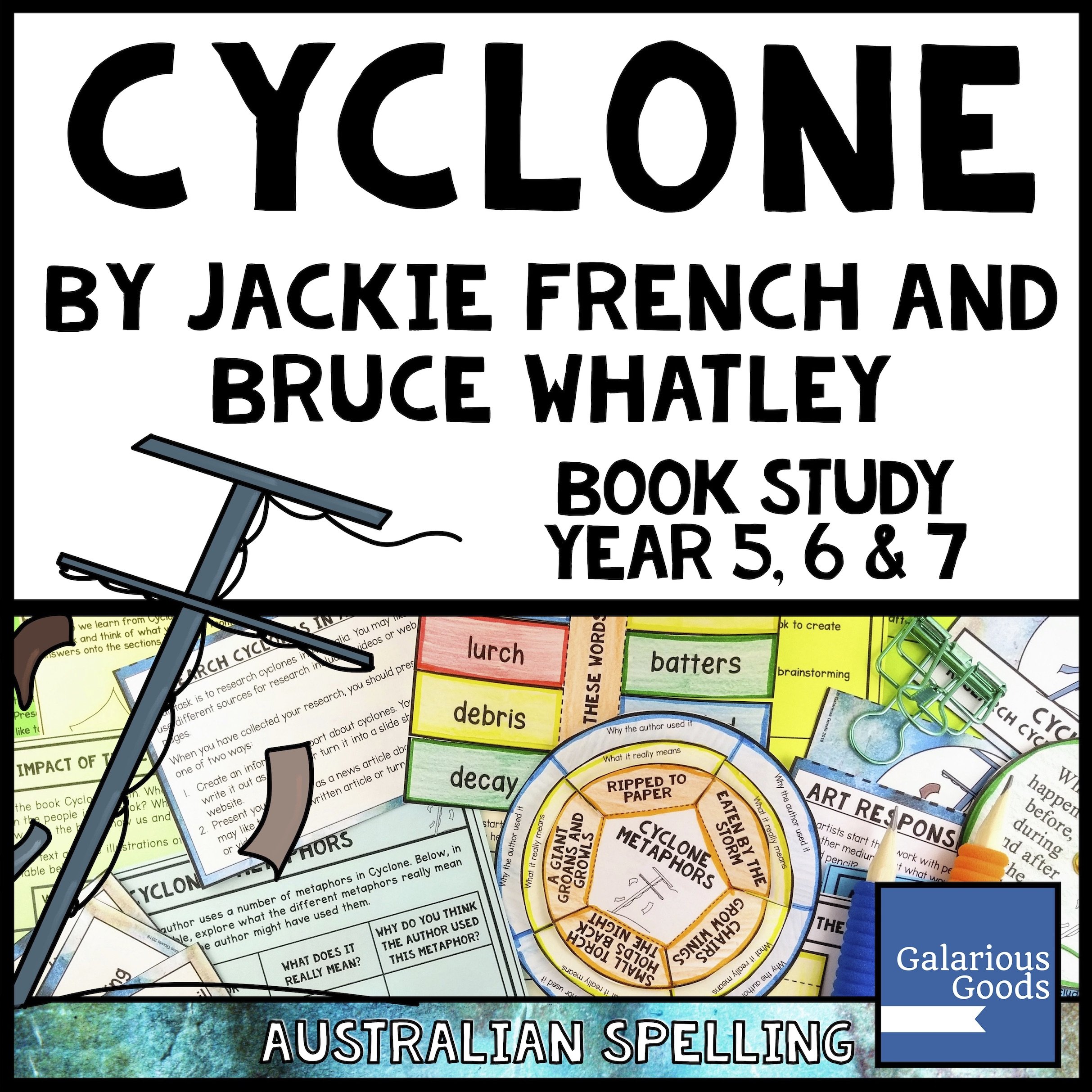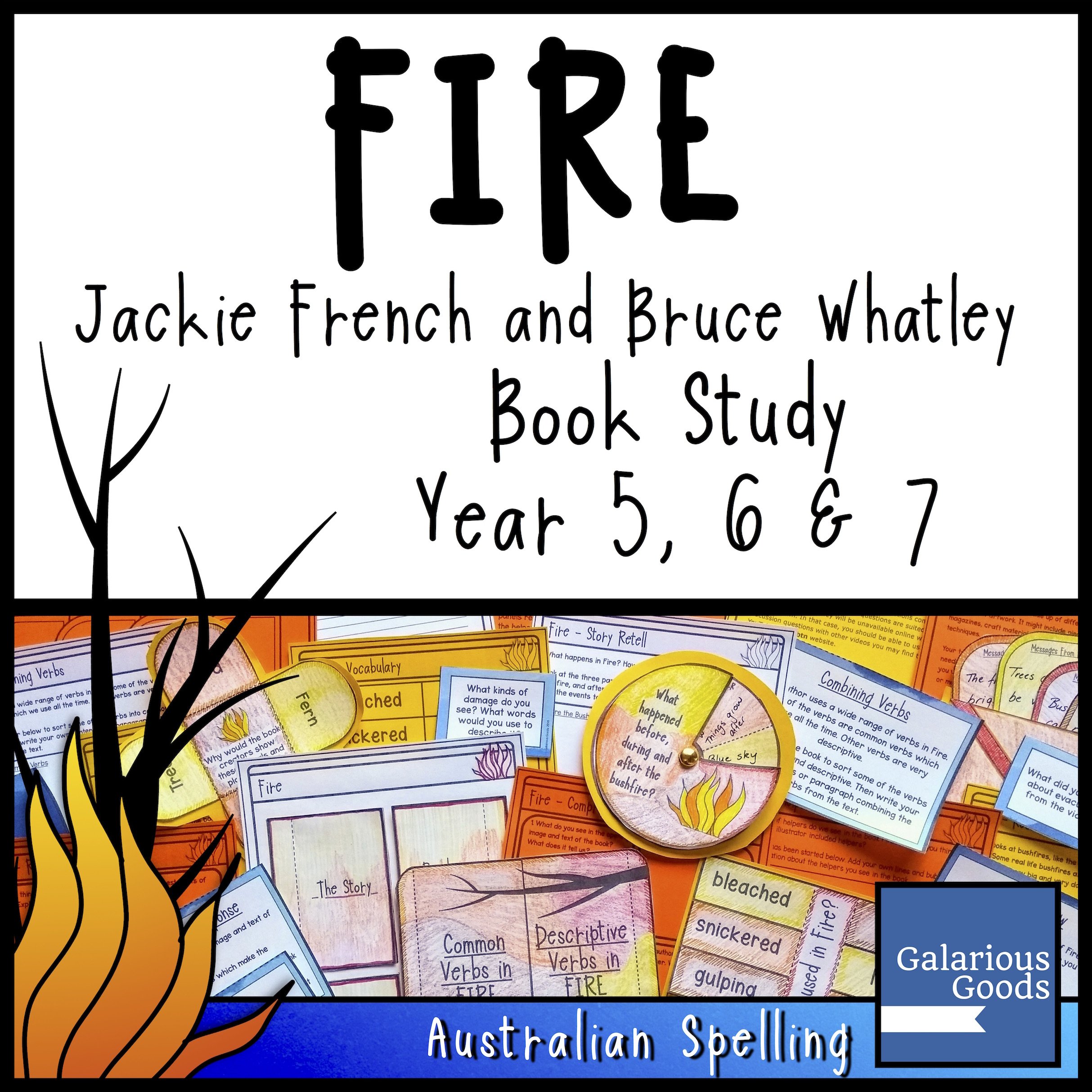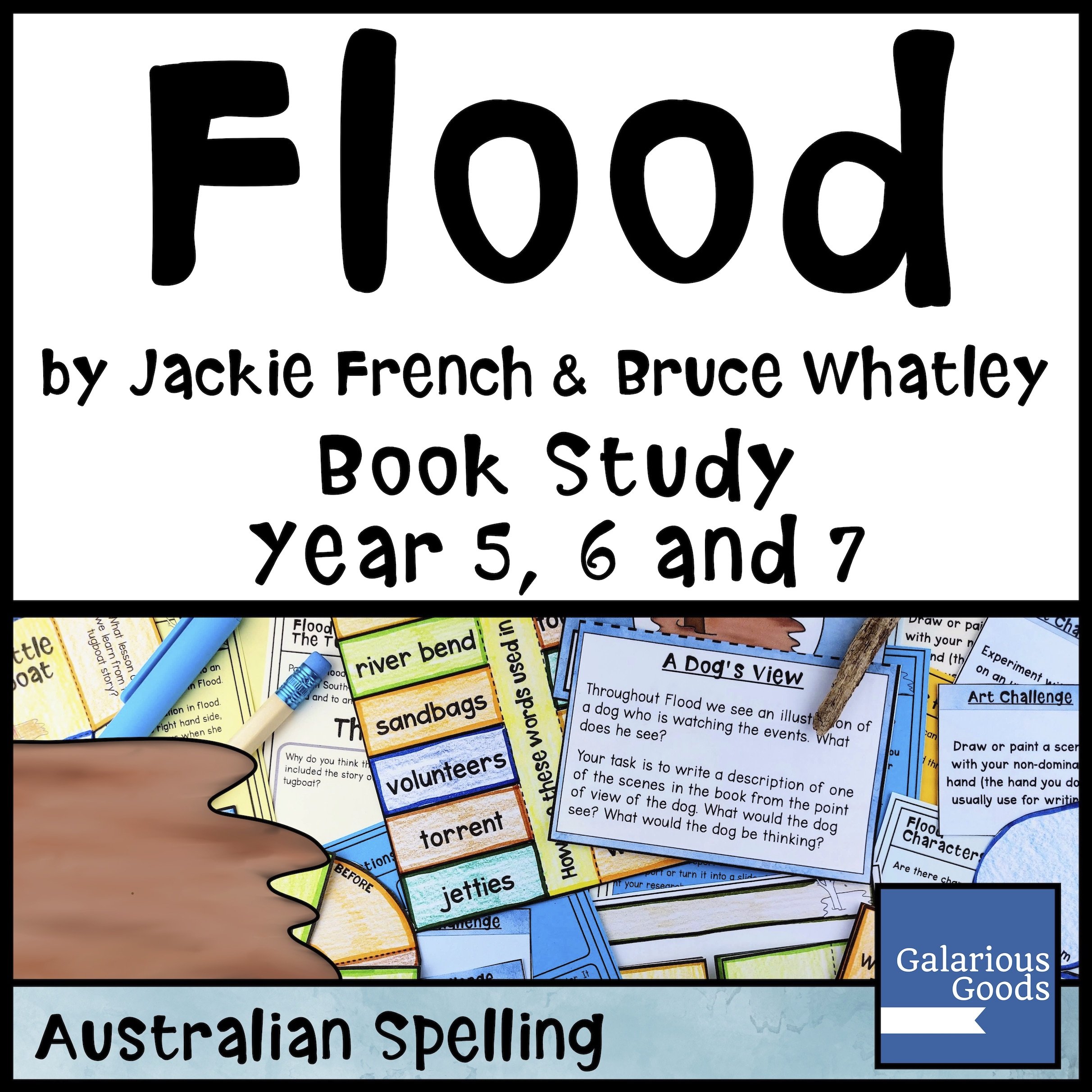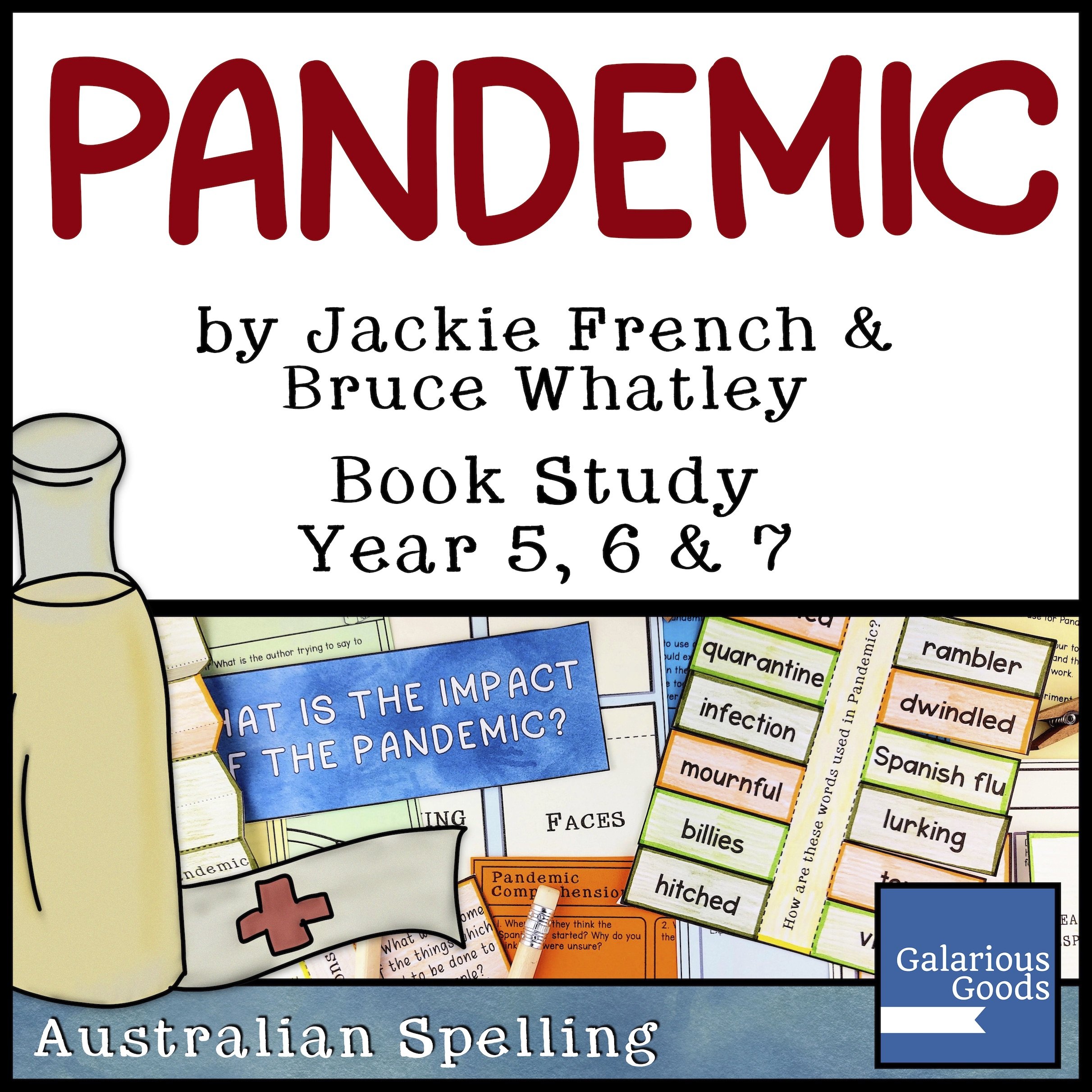5 Ways to Explore Jackie French’s Natural Disaster Books in the Classroom
/When Jackie French’s Flood was first published, it was clear that this book, about the 2011 Queensland floods, would be an important addition to many classrooms. With the addition of Fire, Cyclone, Drought, Pandemic and Earthquake, we have a collection of books which explain and evoke particular disasters in Australia, as well as raising awareness of how these types of events can impact the population and the environment. Here are just some of the ways we can use this important series of picture books in the classroom.
Explore the Text
There’s not a huge amount of text in the Natural Disaster books, which means every word is chosen carefully. Jackie French has crafted books which sometimes read as poetry, often with thoughtful figurative language to explore.
One thing students can look for throughout the books is personification. When the river is nibbling or flames are laughing, the reader is being presented with a mental image which makes it easier to understand the impact of the disaster. Students can identify this personification throughout the texts, discuss why the author chose those particular words and practice writing their own texts with personification.
The way verbs are used throughout the books is another element students can explore. The verbs used are often descriptive or are combined to provide rhythm and a greater understanding of what is happening. As well as identifying how these verbs are used and what would happen if different words were substituted, students can also use these as mentor texts to improve their writing.
Making Connections
Living in Australia, it is not unusual to hear about floods and fires, cyclones and droughts - in fact as I write this, my city is still recovering from a massive recent flood event, the signs of rising waters still around us. These books are easy to connect to the things we see on the television or to other media and texts which deal with the extremes of Australia.
As you explore one or all of the books, you might like to keep a space for students to record connections they find. From videos which explain what a cyclone is, to classic Australian poetry (Said Hanrahan by John O’Brien or Dorothea Mackellar’s often quoted ‘droughts and flooding rains’) to news stories, there’s plenty of material which can expand the understanding of both the natural disasters and the books themselves.
Look For the Helpers
One of the main themes in the Natural Disasters books is that there are always people there to help when disasters happen, from the fire fighters in Fire to the mud army in Flood to the children doing their part to share food in Pandemic.
The idea of looking for helpers in bad times isn’t a new one, but it’s an important theme we can carry throughout the books. Students can make notes of the different types of helpers and the help they provide; look at the qualities of being a good helper and discuss the impact helpers have on our communities.
Research
As these books are based around real events which have occurred in Australia, there’s a lot of scope for researching. Students can be broad with their research, looking at what cyclones or bushfires are and how they happen, or they can focus in on particular events, either those in the books or similar events which have happened.
Students can use the books to spark their research, looking at the vocabulary and events within the books as key search terms which can guide them. They can use their research to write information reports or make a slide show or even write their own informational picture books.
Explore the Artwork
The illustrations by Bruce Whatley are an essential part of these books. Sometimes they tell the story, sharing information we don’t find in the text. Other times they help to create the mood of the story, using a range of different art techniques evoking the disaster or the time in which the story is set.
In each book there’s an illustrator’s note which is fascinating to explore. Bruce Whatley talks about some of the restrictions on his work, either self imposed or through circumstances. He also talks about elements such as the use of colour, the materials used or the techniques employed - all of which the students can identify and discuss.
Students can also experiment with these techniques themselves, looking at how they can use different colours or materials to create their own artworks. They can also take this further by looking at how they might evoke a natural disaster through art work.
















